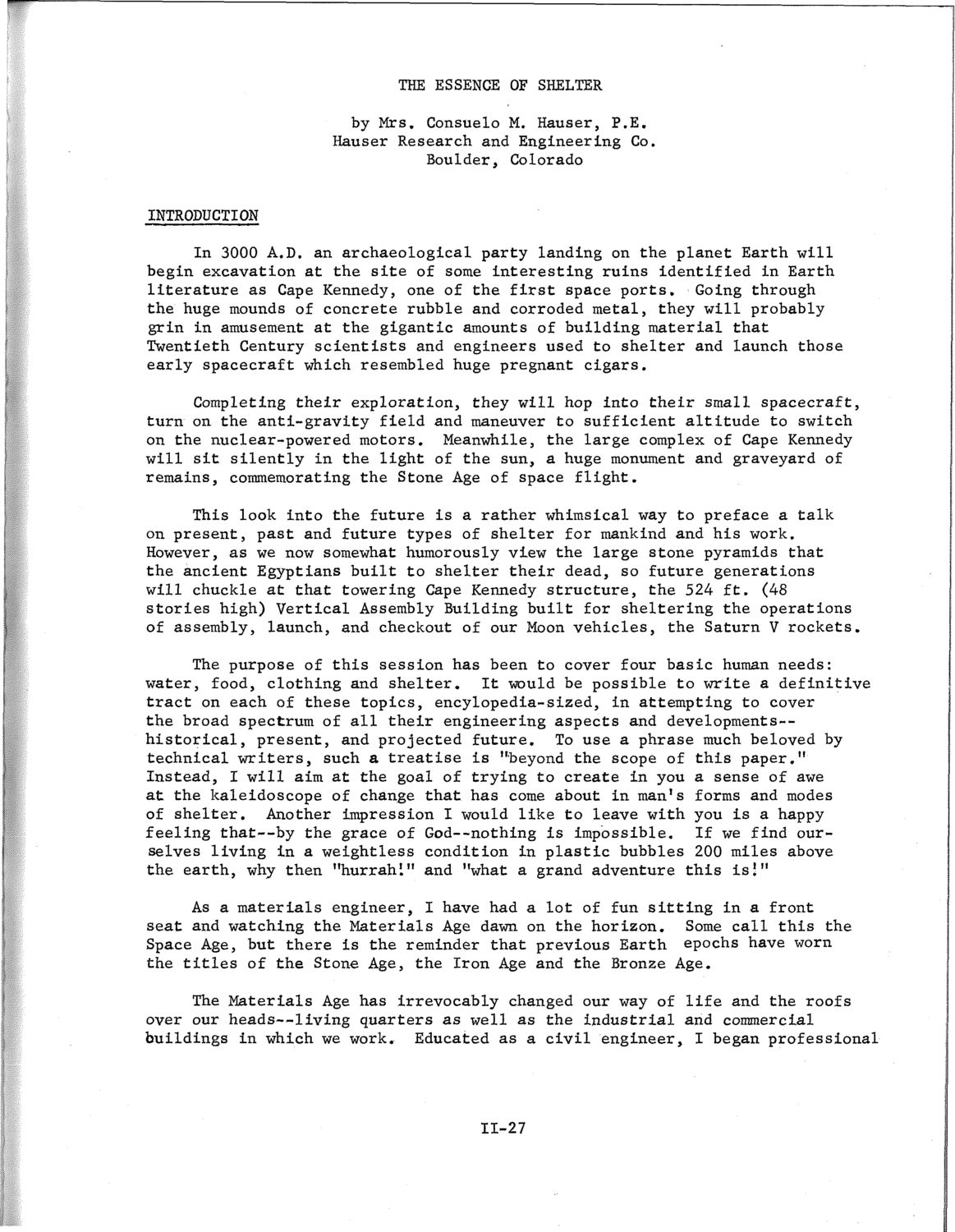| |
| |
Caption: SWE - Proceedings of the First International Conference of Women Engineers and Scientists
This is a reduced-resolution page image for fast online browsing.

EXTRACTED TEXT FROM PAGE:
THE ESSENCE OF SHELTER by Mrs. Consuelo M. Hauser, P.E. Hauser Research and Engineering Co. Boulder, Colorado INTRODUCTION In 3000 A.D. an archaeological party landing on the planet Earth will begin excavation at the site of some interesting ruins identified in Earth literature as Cape Kennedy, one of the first space ports. Going through the huge mounds of concrete rubble and corroded metal, they will probably grin in amusement at the gigantic amounts of building material that Twentieth Century scientists and engineers used to shelter and launch those early spacecraft which resembled huge pregnant cigars. Completing their exploration, they will hop into their small spacecraft, turn on the anti-gravity field and maneuver to sufficient altitude to switch on the nuclear-powered motors. Meanwhile, the large complex of Cape Kennedy will sit silently in the light of the sun, a huge monument and graveyard of remains, commemorating the Stone Age of space flight. This look into the future is a rather whimsical way to preface a talk on present, past and future types of shelter for mankind and his work. However, as we now somewhat humorously view the large stone pyramids that the ancient Egyptians built to shelter their dead, so future generations will chuckle at that towering Cape Kennedy structure, the 524 ft. (48 stories high) Vertical Assembly Building built for sheltering the operations of assembly, launch, and checkout of our Moon vehicles, the Saturn V rockets. The purpose of this session has been to cover four basic human needs: water, food, clothing and shelter. It would be possible to write a definitive tract on each of these topics, encylopedia-sized, in attempting to cover the broad spectrum of all their engineering aspects and developments-historical, present, and projected future. To use a phrase much beloved by technical writers, such a treatise is "beyond the scope of this paper." Instead, I will aim at the goal of trying to create in you a sense of awe at the kaleidoscope of change that has come about in man's forms and modes of shelter. Another impression I would like to leave with you is a happy feeling that—by the grace of God--nothing is impossible. If we find ourselves living in a weightless condition in plastic bubbles 200 miles above the earth, why then "hurrah!" and "what a grand adventure this is!" As a materials engineer, I have had a lot of fun sitting in a front seat and watching the Materials Age dawn on the horizon. Some call this the Space Age, but there is the reminder that previous Earth epochs have worn the titles of the Stone Age, the Iron Age and the Bronze Age. The Materials Age has irrevocably changed our way of life and the roofs over our heads—living quarters as well as the Industrial and commercial buildings in which we work. Educated as a civil engineer, I began professional 11-27
| |